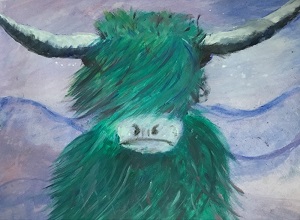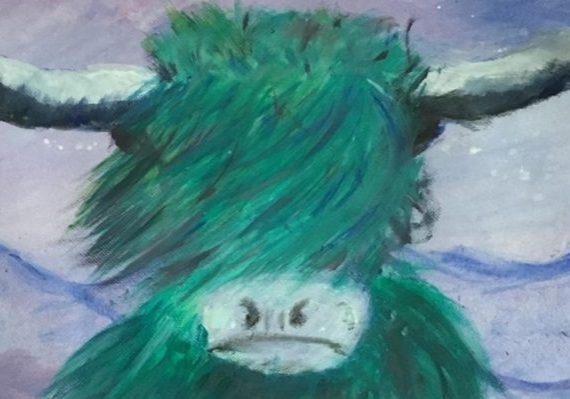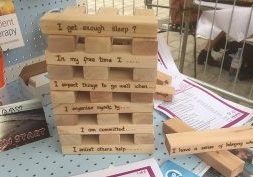Boingboing blogs from… The CRSJ open meeting on digital story telling
The Centre of Resilience for Social Justice meeting: Digital story telling – 6 May 2020, University of Brighton
By Chantel Hargreaves, Centre of Resilience for Social Justice Administrator
Hi there folks, I’m back following on from my first blog on arts based approaches to resilience building back in December (gosh that seems so long ago, where has the time gone?). Although this time I’m writing the blog from my home office with the kids running around in the background asking for snacks every 30 seconds!
Last week I attended the Centre of Resilience for Social Justice (CRSJ) open meeting and Angie asked if I would do another blog. I must have done a good job last time, so no pressure…
Having to meet virtually meant there were no yummy mince pies (although it’s a bit early for those anyway), however, the same essence that I felt back in December was still there, a sense of community and passion for the Centre. At a time when people are facing challenges to their everyday way of life, resilience couldn’t be more on our minds.
Angie kicked off the meeting all the way from a tropical island (if only, it was a MS Teams background), welcoming UoB colleagues, volunteers from Boingboing and colleagues from Blackpool HeadStart. Echoing that coping with Covid-19 is a live action experience of resilient moves, she suggested we all keep in touch/contribute via Twitter, the newsletter, and our blog.
What is Digital Story Telling?
I first got a glance into Digital Story Telling (DST) when I attended Dr Julia Winckler’s fantastic session back in December on arts-based approaches to resilience, so I had a feeling this would be right up my street. The session was led by Ross Adamson, Senior Lecturer, School of Humanities, and Isobel Creed, Research Officer, University of Brighton.
Ross gave us a brief introduction to DST, describing it as, “a process that enables anyone to create a short personal experience story in digital media”. So how does someone go about creating one? There are four themes that aid creating a digital story:
A Process – This is all about who participates and what their roles are. There are facilitators and storytellers. A range of story activities: crafting the stories, learning how to use digital media and the sharing of the stories in a story circle.
A Form – This is the product or outcome of the process, its shape and nature; how long it is and what it comprises (still images, video clips, sound effect, scripted audio-recorded narration) etc.
We were given an insight into what an outcome can look like when we were shown Hannah’s and Ryan’s stories, examples of authors exploring an experience or situation using a performative approach. Authors of DST are often people who are not used to being heard or speaking in front of others.
Hannah’s story was about dealing with mental health. I have to admit I found the first minute quite uncomfortable to watch. I reflected later and asked myself why I felt this way. Was it because I felt I was being intrusive, watching someone lay out their darkest, most inner thoughts, or was I uncomfortable because I recognised some of those thoughts in myself? I think it a bit of both.
I found Ryan’s story easier to watch, but I think Hannah’s story had prepared me for what to expect. His story was about dealing with the loss of loved ones and how this sent his life down a destructive path.
In both stories the raw emotion was palpable, and I admire the courage it took both of them to share their most personal and inner thoughts in an authentic way. Both stories ended with a hopeful and positive message. Hannah learnt to accept the voices were part of her, and I think this brought her some peace, and with the support of close friends Ryan managed to turn his life round and remained positive about the future.
A Movement – Research, conferences, websites etc help nurture the practice and develop a shared sense of aims. The story centre says:
“To promote the value of story as a means for compassionate community action. We partner with organizations around the world to develop programs which support individuals in rediscovering how to listen to each other and share first person stories. Our group process and the stories that emerge serve as effective tools for change amidst a world of technology and media overload.” http://storycenter.org/about-us/
A Practice – What it aims to achieve, i.e. its ‘internal goods’:
- The good for the individual making the story and
- The good for social change
The great advantage of having the meeting virtually was the opportunity for people to post questions in the chat. There was a flurry of discussions about around digital story telling, such as consent for stories with pictures in them, stories being co-opted, reactions that may not be positive, and how to transition the individual’s personal story into activism without separating the individual from their story.
One of the themes that came up in the chat was civic engagement vs civic activism. The CRSJ is currently working on a project that seeks to move from individual stories to collective… how can we beat the odds and change the odds type thing called Nothing about us without us. Stories as a catalyst for a call to action? Watch this space… Viva the Revolution!
Ross and Isobel talked us though some examples of project themes in Higher Education, which are based around moving away from home, adapting to a new place and bonding with new groups. A project very relevant to our School is Patient Voices. It aims to tell the story of how patients and workers experience the healthcare system and is driving organisational change.
But the one that sparked my interest was:
Moving Stories – The University of Brighton are working collaboratively with Blatchington Mill Secondary School. Moving Stories has given migrant children a voice, enabling them to bond and share their experiences. These stories are being used as a tool to help train teachers on the challenges that migrant children may face in school. The stories have also been shared with school children and have been found to increase empathy amongst their peers.
Story time…….
Now came the opportunity for us to take part. We split into groups (yes you can do break out groups in virtual meetings). We were each asked to bring along to the meeting an object or photograph which is significant to us, and in our groups to explore stories that might emerge from the personal artefacts.
We unfortunately ran out of time in my group and I didn’t get to tell my story, so I thought I would share it here with you all. Below is a picture of my object:

It’s a painting of a Highland Cow. “Who is this amazing up and coming artist?” I hear you say. Yes it’s me! I will admit I am no Van Gogh, but I have always had a love of drawing and painting. As a child I was always doodling. In my early 30s I did a few art courses and really loved it, I find it very therapeutic. But then after having two boys I always found excuses – no time, too tired. Then Covid-19 happened and everything changed. We all suddenly found ourselves with no face-to-face contact with friends or family. Fed up of watching, let’s face it, mindless TV, I discovered The Paint Club, a local Sussex painting group for all abilities. They usually run their events in pubs and restaurants but were now doing online workshops. I signed myself up and gave it a go. Well I am now in LOVE with painting again, this Highland Cow was my second painting (it’s still a work in progress) but I am really pleased.
My personal story that this painting tells is the sense of believing in my abilities again, and what I can achieve. I am more than just a mum, a wife, a daughter. I am a person who has the ability to create something beautiful (albeit in my eyes, but that’s all that matters). By the way my creativity has also now spanned to sewing. I plan to make a skirt from African wax cotton for my big birthday this summer.
An interesting conversation came out of our group about ensuring that people’s stories are not just made, but also heard… heard by a wider audience. More energy needs to be put into creating the audience and ensuring the stories find life.
More news
Ross and Isobel’s planned exhibition in Hove Town Hall for June/July has been postponed and may go online. It will be showcasing storytelling and its effects on wellbeing of members of GROW, a charity that works with mental health, the outdoors and nature, and finally young people from the Resilience Revolution for which there is currently a pilot in Blackpool.
Ross and Isobel are also planning to do a digital story telling workshop with young people at the International Resilience Revolution Conference in Blackpool in September 2021. Keep an eye out for more details.
I enjoyed the workshop and I think this is because I respond well to visual stimulus. Isobel said that people often say “I don’t have a story”, but always come out of the process with one. In years to come what will our digital stories say about the year 2020…? Let’s wait and see.
The next CRSJ meeting will take place on Wednesday 9 December 2020, 1-4pm at Falmer (room to be confirmed), and will look at ‘Organisational Resilience’ with university members sharing their experiences of wellbeing and resilience. Please join us.
Resources
These resources were offered by members of the group during the meeting, illustrating the power of digital storytelling to enhance social movement of particular interest for those interested in resilience research:
National Film Board of Canada’s ‘action for change’ https://www.nfb.ca/playlist/challenge-for-change/
Use-led organization which represents, supports and empowers people living with long term health conditions: https://www.disabilitycornwall.org.uk/about-us/research
Joseph Rowntree Foundation exhibition about the resilience of people swept into poverty https://www.jrf.org.uk/event/picture-britain-our-people-our-poverty
Gubrium, A., Fiddian-Green, A., Lowe, S., DiFulvio, G., & Peterson, J. (2019). Digital storytelling as critical narrative intervention with adolescent women of Puerto Rican descent. Critical Public Health, 29(3), 290-301. doi:10.1080/09581596.2018.1451622
Rouhani, L. (2019). Using digital storytelling as a source of empowerment for rural women in Benin. Gender & Development: Feminist Values in Research, 27(3), 573-586. doi:10.1080/13552074.2019.1664140

